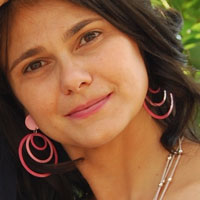Learning and Re-Learning Dextrous Object Manipulation and Control
Related Experiments | Key Publications | Future Investigations | Noteworthy Equipment | Collaborators | Research Support
Deficits of manual dexterity can arise from sensorimotor impairments due to normal aging and as a consequence of neuromotor injury such as stroke. Our long-term goal is to develop intelligent, low-cost, portable technologies that can help improve accuracy and coordination of arm, hand and finger movements across the lifespan.
Related Experiments
- Improving Finger Dexterity Post-Stroke
- Optimizing Motor Coordination through Re-Learning
The ability to make dexterous individuated movements with one’s fingers is essential in completing necessary everyday tasks. Following a stroke, impairment of hand dexterity is a common lasting side effect, but rehabilitation of the hands and fingers typically follows that of the proximal limb segments. The goal of this project is to develop low-cost technologies that can be used to improve finger dexterity through the re-learning of individuated finger motions.
Many stroke survivors have to re-learn how to reach for an object after stroke because their movement capabilities have changed. In some cases, patients may have learned “compensatory” movements—atypical coordination patterns such as the use of excessive trunk motion—to compensate for arm movement deficits. To optimize beneficial effect, new training strategies need to take into account existing compensatory patterns. This project explores the adaptive processes underlying motor re-learning. Our approach requires people to learn how to coordinate finger motions (captured by a 19-sensor data glove) to control a cursor's motion on a 2-D computer screen. This not only allows us to examine the acquisition of new finger coordination patterns, but also allows us to use a geometrical analysis to precisely quantify how these coordination patterns relate to task performance. We focus on how prior coordination solutions affect subsequent learning of similar tasks, not only in terms of movement outcomes, but also in terms of how the prior solutions shape coordination patterns adopted during re-learning.
Bowing a Restrung Violin
In collaboration with the Music Institute of Chicago, we are providing STEM-based outreach to a broad sampling of violin students and educators in a field setting focused on real-world skill acquisition. We do so by providing Chicago Suzuki institute "enrichment classes" wherein we introduce participants to the experimental study of motor skill acquisition. These activities simultaneously provide a real-world test of our research on motor re-learning using task variants of relevance to violin players with varying experience levels. Although the field setting lacks some experimental controls that are only possible in a laboratory setting, it does provide unique advantages such as the ability to explore coordination patterns that have been consolidated over years of practice. These studies are providing insight into the generality of the principles of motor learning and re-learning we are study in the lab.
Key Publications
Moro M, Casadio M, Mrotek LA, Ranganathan R, Scheidt RA, Odone F (2021). On the precision of markerless 3D semantic features: an experimental study on violin playing. Conf Proc IEEE Intl Conf Image Proc (ICIP), Anchorage, AK.
Scheidt RA, Moro M, Pilia G, *Ludwig E, Brasch B, Mrotek LA, Casadio M, Ranganathan R (2021). "Bowing a re-strung violin: a real-world test of motor re-learning." Soc Neurosci., Chicago, IL.
De Vicariis, Cecilia (2019). “A 5-Digit Manipulandum for Investigating Generalization of Force Coordination Patterns between Different Hand Configurations.” Master’s Thesis, Bioengineering, University of Genoa.
Scalella, Martina (2018). “Development and testing of a 5-digit grasp manipulandum for the evaluation of fingertip force control during the learning of a redundant task.” Master’s Thesis, Bioengineering, University of Genoa.
Ranganathan R, Wieser J, Mosier K, Mussa-Ivaldi F, Scheidt RA (2014). "Learning redundant motor tasks with and without overlapping dimensions: facilitation and interference effects." J Neurosci 34(24): 8289-8299.
Future Investigations
We seek to transform the knowledge gained through these studies into therapeutic interventions that are effective in rehabilitating hand and finger motions after stroke.
Noteworthy Equipment
- Custom Grip Manipulandum (created in-house)
- CyberGlove 21-sensor data glove
- Re-strung Violins (full and half-sized)
- NDI Optotrak 3020 motion capture system
- Custom markerless motion tracking system
Collaborators
Not Pictured
Lauren Nelson
Giovani Pilia
Conor McFarlin
Emma Ludwig
Matteo Moro
Owen Lutz
Aine Grady
Research Support
This work is supported by awards from the National Science Foundation, including OISE 1854158: "IRES Track 1: Physical State Estimation for Control Coordination and Behavior Monitoring" and SCL 1823889: "Optimizing Motor Coordination through Principles of Motor Relearning".

 Robert Scheidt, Ph.D.
Robert Scheidt, Ph.D. Rajiv Ranganathan, Ph.D.
Rajiv Ranganathan, Ph.D. Maura Casadio, Ph.D.
Maura Casadio, Ph.D.